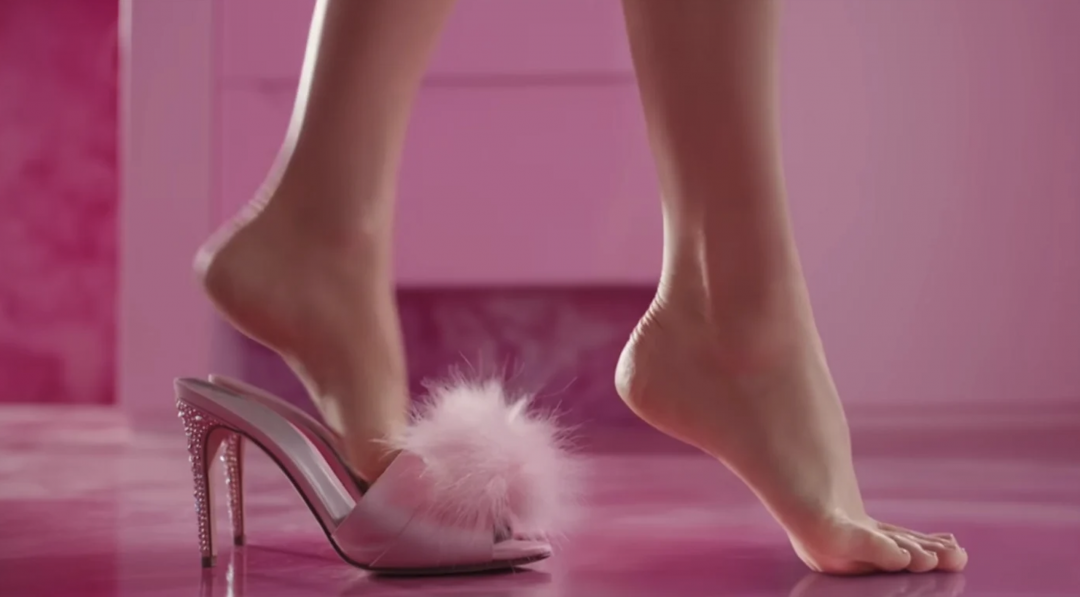Before they had even seen Greta Gerwig’s Barbie the movie Professor Katie Pickles and Ange Lavopierre nailed her backstory. Janice Breen Burns spoke to them before this week’s Barbie the movie premiere. (This story was first published in The Age and Sydney Morning Herald.)

Inspirational role doll? Or toxic spider in the toy-box? Which side of the Barbie divide are you on? Time to make up your mind. The world’s been surfing a tsunami of trends, TikToks and treatises in the run up to Barbie the movie and by the time we’ve all seen it (or made a judgy-judgy socio-political personal decision not to) there’ll be no neutral ground. Are you for Barbie? Or wish you could wipe that pernicious bimbo off the face of the earth for the 64 years of harm she’s done to women?
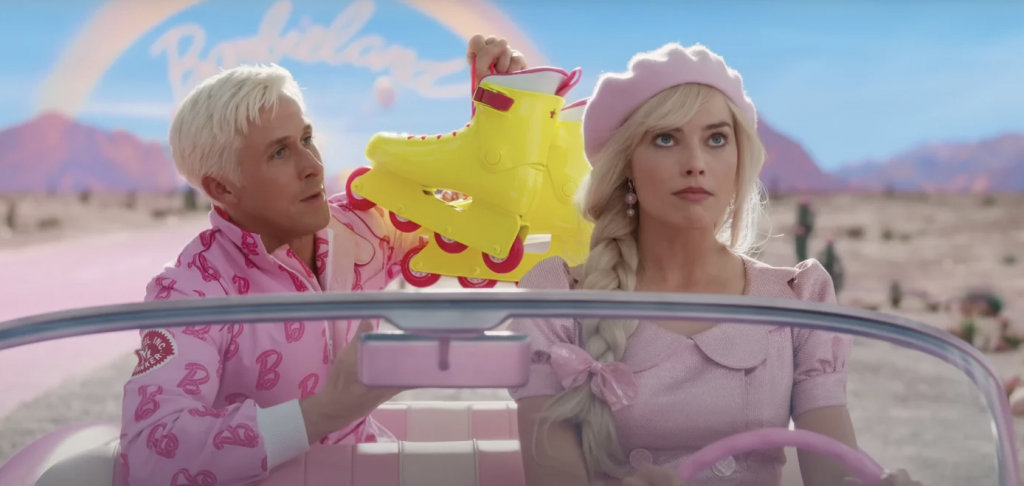
Before you answer that; a bit of background. For all her girly pep and sparkle, Barbie has never NOT been controversial. In fact, from the get-go in 1959 when toymaker Mattel launched its evocative 29 cm stick of pony-tailed plastic with her torpedo breasts, caucasian complexion, legs-up-to-there and feet permanently posed en pointe (for tottering in high heels) onto the market in a fetching zebra swimsuit, Barbie’s had mums unnerved, little girls’ hoarding their pocket money and feminists wringing their principles.

“Simone de Beauvoir had just written about women being treated like living dolls and then along comes Barbie…” Katie Pickles is a history professor at Canterbury University and author of Heroines in History: A Thousand Faces (Routledge) in which she touches on Barbie’s social impact. “This mass produced plastic doll wasn’t like any of the rag dolls or baby dolls all through history,” she says. “This one was teaching you how you should look, what body type and what body weight you should be… it was virtually saying; you can grow up to be a living doll too.”

Pickles’s theory goes; mass-produced plastic iterations of Barbie have commodified her narrow-gauge fashion model looks and served them up like lolly-pills to generations of little kids. “Up until then you had dolls – like baby dolls, modelling things like being a mother, things girls could grow up to do,” Pickles says. “Now suddenly you’ve got this teenage or adult looking doll that’s also modelling how you should grow up to look like. Not only that, if you didn’t actually look like one, you’re “othered”..(a.k.a made to feel shitty about yourself).”
Yes, Barbie could be anything a little girl imagined her to be, says Pickles, but there was an unsettling catch for feminists and some hyper-aware parents (though most, obviously, couldn’t care less). “You could dress Barbie up and get her to do things – there was agency in that – but she was still this plastic doll with the legs and the bust, looking a certain way underneath. The message was very uniform, very serial that this was the reality for you…”

From 1959 Barbie rolled out like a social explosion. More than 350,000 popped up in US toy-boxes that first year, billions worth across more than 150 countries by 2023. Her phenomenal success was at least partly fuelled by Mattel’s talent for making Barbies adapt, evolve and multiply. The toy company market-researched the schizen out of every major shift in social values, especially blips on feminism’s timeline and viral gripes about Barbie’s apparent shortcomings. It has responded cleverly by progressively modifying her persona, cranking up her aspirations and offering options that diversifying her dolly-girl iterations to chime with the Zeitgeist. “They play on where society is at any time,” Pickles says. “They respond to that in order to keep selling Barbies.”

It’s ingenious. But, beneath basic Barbie’s exquisitely contrived exterior there is still a dense tangle of socio-political issues that most parents who get begged and begged for a Barbie – “Please mum please; everybody’s got one” – choose to ignore or, let’s face it, couldn’t give a toss about.
“Barbie’s “Inspiring Women” series for example,” cites Pickles: “Women like Jane Goodall, Frida Kahlo, Rosa Parks, Florence Nightingale, made into Barbies…and Ok, a lot of people will just read that at face value and go off and buy a Barbie thinking great, girls can play with these and aspire to be like them and that’s good. But it’s so much more complex than that: here are all these amazing, trailblazing women who’ve broken through boundaries, lived lives of substance and chosen not to be objectified, not to be role models valued for their appearance, not to be sex objects, not to be living dolls, and here they are, made into pretty plastic dolls that objectify them for profit. Look at all you’ve achieved: now you’re a Barbie. Wow.”
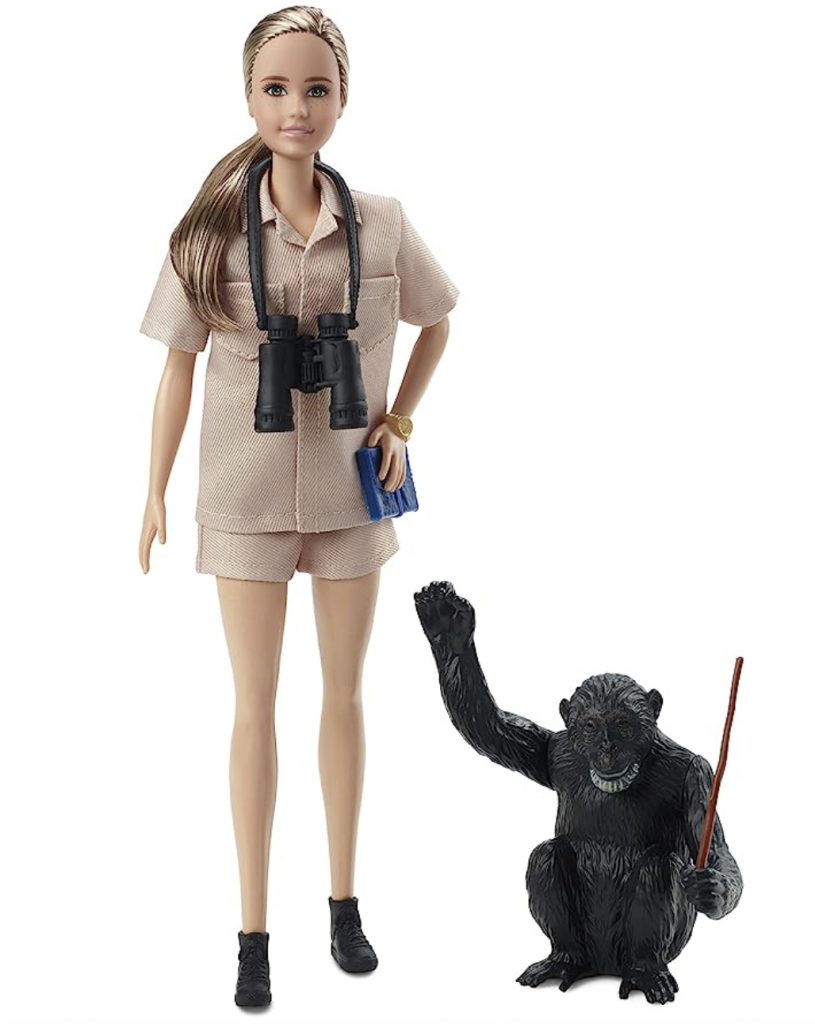
In fact, Barbie’s ultimate aspirations seem increasingly Pinocchio-esque according to Pickles. “Once it was consumers who made Barbie “real” by imagining and playing.” she says. “Now Barbies are based on real women and with the movie, she’s so real, we can see her, she’s a glamorous movie star; she’s Margot Robbie.”
Let’s go Barbie! There’s a pink tsunami of hyper-Barbie-mania breaking uncritically across the planet but the only question really relevant in these volatile cultural times is, what’s Barbie got to do with Now?

At the time of writing, the movie was still under wraps (and, another cunning marketing ploy to fluff the hype; no preview screenings for journalists either). But teaser trailers sowed clues enough to string a theory. And Margot Robbie’s new flesh and blood doll sure feels like one of those seismic ruptures in Barbie’s evolution, like when she came out in skin-tones other than white, or got a career (lots of careers), or her waistline thickened slightly or her en pointe feet were lowered for Black rights legend Rosa Park’s mid-heels or environmentalist legend Jane Goodall’s boots in her special collectable “Inspiring Women” series. Maybe Barbie will finally shake her persistent air-head bimbo repute?

“It does (seem) like an unambiguous attempt to modernise and reboot Barbie at a perfect moment in the Zeitgeist,” is how Ange Lavoipierre, journalist, comedian and host of ABC’s whip-smart Schmeitgeist podcast puts it. “This Barbie is progressive, she has a tad of nihilism, she’s alive to the kind of darker possibilities and threats of the world that Gen Zeds and Millennials know…”
She’s different in other words. Same-same perky pretty girly exterior, but maybe different, Lavoipierre surmises, and maybe in the knowing, politically engaged and ironic way of Gen Zeds and younger Millennials.

“Maybe this is the first time that Barbie is the one making a joke at her own expense…,” she muses. “Like, the most meme-ed moment (from the movie) is when (Barbie) asks; “Do you ever think about dying..?” and scratch! Everything stops and the world starts to crumble around her…she’s contemplated the void for the first time…She’s a lot more like a real girl…”
A lot more like a real Gen Zed or Millennial, to be precise, from possibly the most complex, intensely political and highly evolved generations ever, according to Lavoipierre. “We’re maybe a more diverse group than any generation in modern history,” she says. “Because we’ve been socialised on the internet, developed our cultures in so many different little bubbles…We’ve seen things, we know the darkness of the world, there’s a pronounced sense of instability and insecurity…”
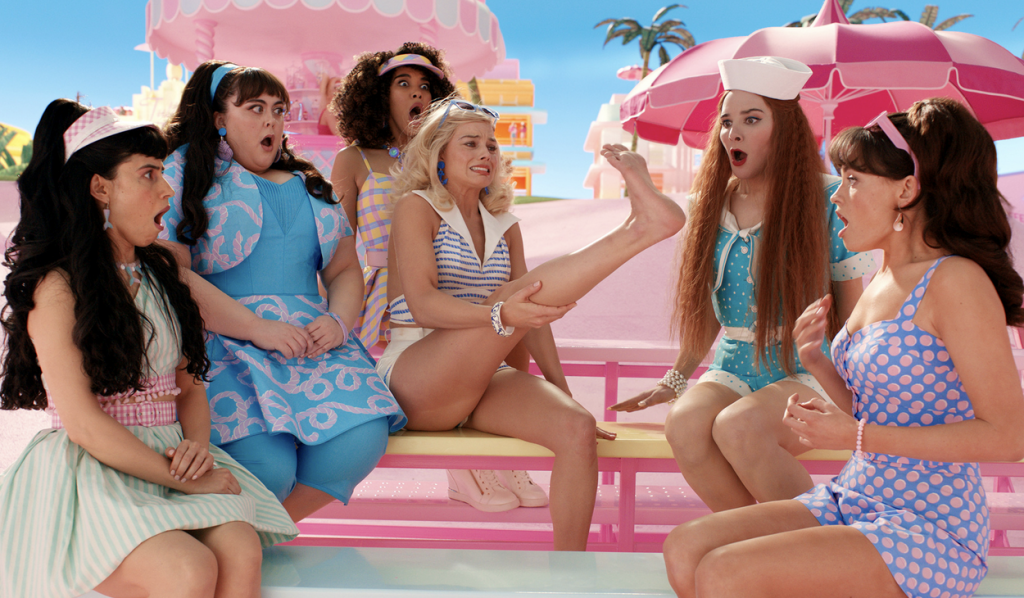
Barbie is pitching smack into the middle of this dominant, disparate group and Lavoipierre marvels at the brilliance of Mattel’s timing. “I wondered if it was just happenstance or they actually saw the Zeitgeist tracking in the way it was and chose this perfect moment (to reboot Barbie) because there were all these little signals, so many signals in deep internet culture…then 2021 was labelled the Year of the Bimbo…”
And that was it; ding. A new wave of bimbo culture, of all things, is a telling clue to what’s cooking among Gen Zeds and younger Millennials now. Recently Lavoipierre even devoted a whole Schmeitgeist podcast to Bimbo 2.0, a sub-culture of mostly young women reclaiming hyper-femininity; all its tropes, frocks, heels, makeup and, you could say, all its Barbie-esque dolly accoutrements, as empowering tools of self-expression.
Theoretically she says they’ve unhitched the whole flirty-girly genre from the male gaze and patriarchy and all that implies. “The new bimbo is innately political,” says Lavoipierre. “She’s making a point but with a wink and in a knowing way…” Women have evolved Bimbo 2.0 into a deeply complex and ironic new feminism as diverse and individual as there are girls to play and live it.
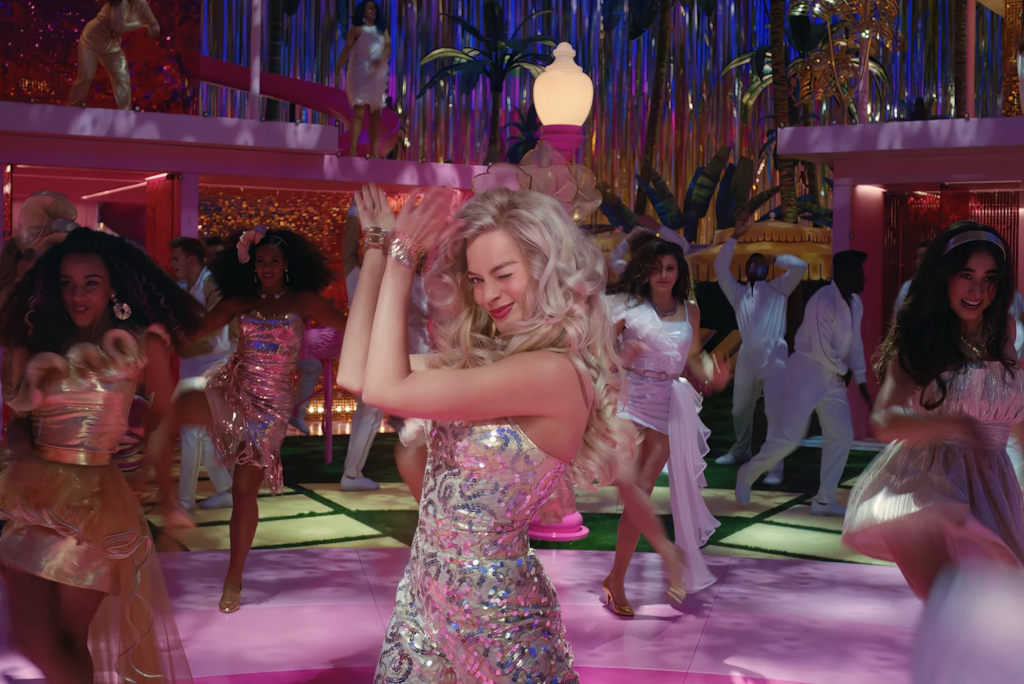
They’ll even play bimbo-dumb to confuse and drain power from trolls and scorners, according to Lavoipierre. “Pretending to be dumb can mean not having to answer your dumb questions,” she says admiringly. “That’s sophisticated! She’s saying; ‘I don’t mind if you think I’m a dumb bitch because it means I don’t have to deal with you’. You’ve got to really back yourself for that…”
So, was it enough, and where is Barbie on the Zeitgeist now? “It’s a hard task,” says Lavoipierre. “This 2023 version of Barbie is trying to match the very, very complicated feminism of a new generation and…(laughing) I think I’ve talked myself into some enthusiasm for her.”
So Lavoipierre’s for Barbie.
And me too: I’m for Barbie. We’re this side of the Barbie divide.
Pickles, not so such but, some things are inarguable; “Barbie culture is bigger than ever,” she concedes. “You’d have to say, Barbie is winning.”
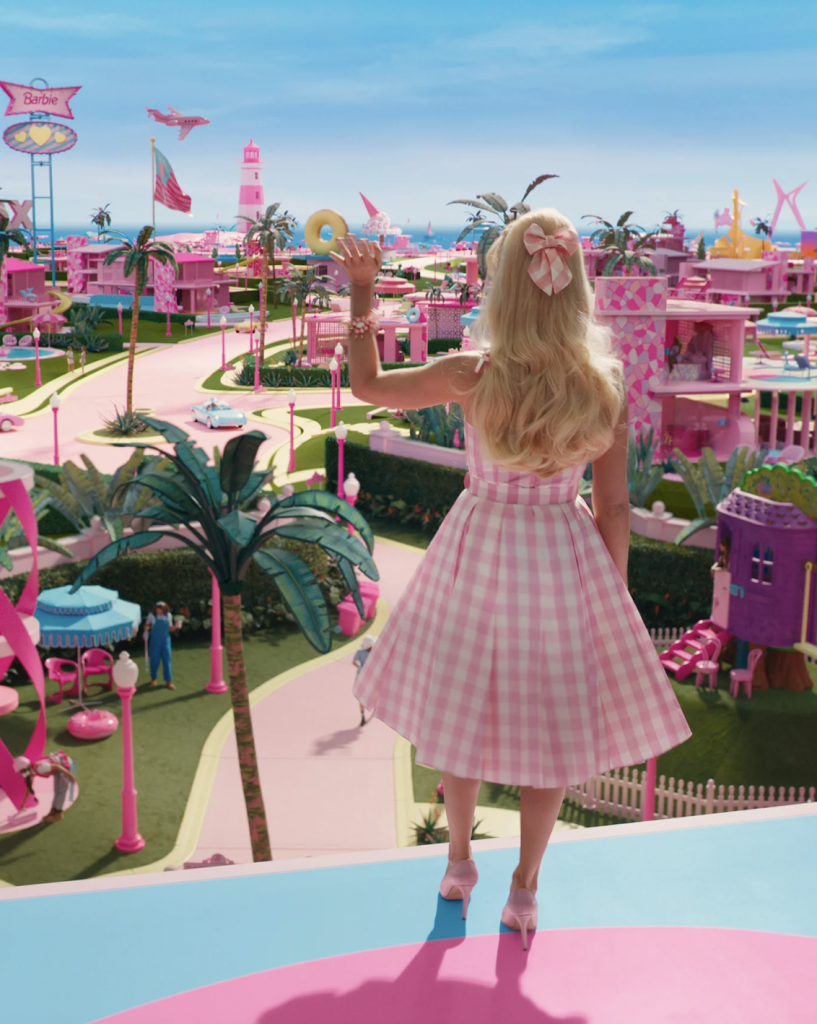
Barbie the movie is in cinemas now.

